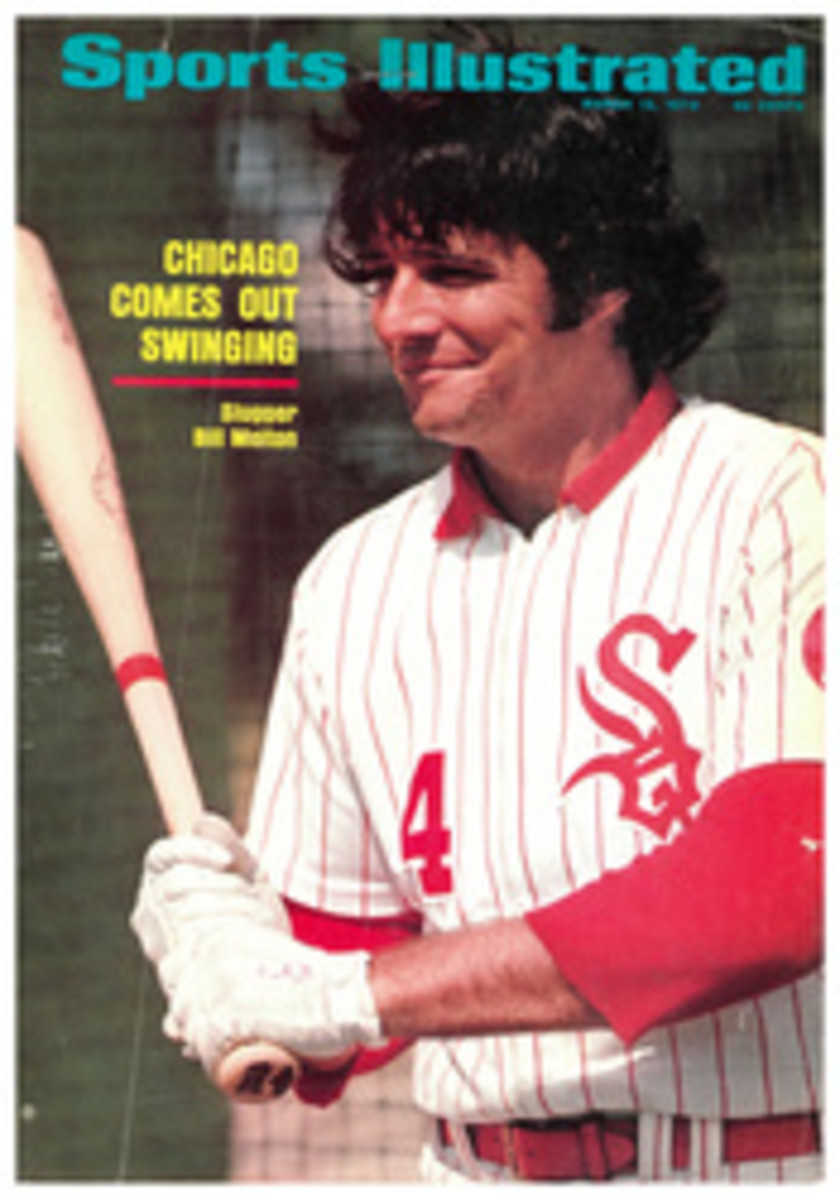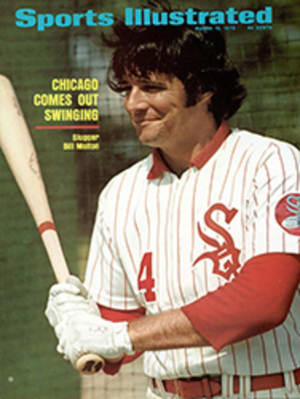
It wasn't small potatoes in Pocatello
According to the laws that dictate such things, new ventures chasing after a piece of the action in professional sport should be prepared for foul-ups, crowds of 543 and wise guys saying, "I told you so." Someone, however, amended the rules for the International Track Association, America's first touring company of professional track and field athletes, whose debut last Saturday night in Pocatello, Idaho was anything but small potatoes.
There were some goofs, of course, and other stuff too slick or slack for the track nut, but the mishaps should be corrected by the time Mike O'Hara, the outfit's entrepreneur, assembles his full cast on the boards in 18 other cities between now and June 6. And as for the outrageous spectacle of the saintly track man actually taking money over the table, the public will be more offended by Sesame Street.
At Pocatello, the public turned out 10,480 strong and it may stir a few poignant memories among the folks who brought you the American Football League to learn that ITA's first gross gate was in excess of $30,000. Despite a program that ended 45 minutes behind schedule, the public also went home happy, entertained by a good show and the novelty of salaried athletes competing for $500 to win, $250 to place, $100 to show and $50 for fourth.
Before the meet was over, the firstnighters had been treated to three world indoor records (which won't be recognized as anything by any official body, since the contestants were earning a living at the time), two at odd distances and a phenomenal third in the high jump by the least celebrated member of the cast. The crowd appreciated, too, a format that eliminated one annoying aspect of indoor meets—missing a spectacular effort by watching something else going on simultaneously. ITA isolates each of its events and spotlights individual performers. A shotputter, for instance, is required to wait before making his throw if a vaulter is about to try a height. That innovation, which was further enhanced by a time limit on field event tries (30 seconds for shotputters, 45 for vaulters), may be the best of ITA's improvements, but the Minidome crowd grooved over the use of electronically timed pacer lights fixed to the 220-yard track at 10-yard intervals. The bulbs can be set to blink sequentially with any pace programmed by the timing device. Thus the lights, and two rivals, pushed Lee Evans to a new world record of 1:16.7 in the rarely contested 600 meters, just as Evans had predicted earlier in the week.
"I wanted to help ITA get off to a good start and I wanted the world record," Evans said. "I knew if I stayed ahead of the light, I'd have it." The lights also gave Jim Ryun a deceptive triumph of man over candlepower in a solo 1,500—the fans had not been informed that Ryun's lights were set for 62-second quarters, and they assumed he was running at a world-record pace. Ryun, who was timed in a poky 3:50.3, could be forgiven, though, even ignoring the fact that it was Marty Liquori's job as emcee to keep the crowd abreast of such things. Three days before the meet, Ryun's wife Anne gave birth to twin sons (Andrew Monroe and Nathaniel Charles) in Santa Barbara, and James Ronald had had some sleepless nights.
The biggest money-winner of the meet was little Warren Edmonson, the ex-UCLA sprinter who took home $1,100 for covering the 100-meter final in a world-record 10.2. He got $500 for first, $500 for breaking the record and $100 more for tying it in a heat. The indoor 100 also is rarely run, and Edmonson won it when he beat Mel Pender out of the starting blocks. "When you're doing this for $500," he said, "you've got to be the first one out."
For those who cherish trivia, it should be stated that the first athlete ever to win an ITA check was Tom Von Ruden, who beat Gerry Lindgren in a 4:09.6 mile. The first woman so enriched was Lacey O'Neal, who took the 100 in 11.8 over Barbara Ferrell and Wyomia Tyus Simburg.
The results of the field events were predictable in all but the high jump and shot. Pig-tailed John Radetich, a teammate of Dick Fosbury at Oregon State, exceeded his personal best by 2¾" when he won the former with a jump of 7'4¾", bettering the world indoor mark of 7'4‚Öù" set by Valery Brumel in 1961, while Brian Oldfield (67'5½") upset Randy Matson (66'4½") in the latter. Bob Seagren, competing for the first time since his dismal encounter with Wolfgang Nordwig at the Olympics, won by leaping 17'6", and Bob Beamon took the long jump with an effort of 26'½", his best in almost four years.
For comic relief the ITA staged a couple of 440-yard relays unlikely to be duplicated by the AAU, NCAA or NASCAR. The first matched teams consisting of a high jumper, a long jumper, a female sprinter and a hurdler; in the second they were composed of a shotputter, a vaulter, a hurdler and a sprinter.
"I know pro track is going to work," Evans said at the end of the meet. "We've got the best names."
To augment that selling point, ITA is schooling its athletes in the first principles of show biz. "During introductions," its operations manual reads, "it is important for the athletes to realize that the spectators paid money to come and see them and the more responsive they can be the better. Wave during introductions, smile, turn to all sides of the arena and acknowledge the applause. Europeans are very good about this. They act as if they enjoy the crowd and are having fun. Many USA athletes act glum, as if they are about to be shot the next minute. You are athletes first and to concentrate upon your competition is certainly important, but keep in mind that we are entertainers also and a bit of 'show biz' will be appreciated by your fans.
"Winners will be spotlighted after the event. All...should be prepared to take a victory lap if requested and wave during that time. Let them know you hear the applause and appreciate it. Act happy that you won, don't be embarrassed. There is a bit of ham in all of us."
"Our whole thrust is toward the sports fan," said O'Hara. "If we can educate him, stimulate him and interest him, we think we can make ITA. With money on the line, the pressure for the great record is removed. For the sports fan, the first question is always 'Who won the money?' In pro golf they don't particularly care if the guy who won was 10 under par, so you don't live or die on the basis of great times. I think of it as a trio—the ITA athlete, the ITA management and the sports fan. The way we reach eventual success is to get the sports fan in each city interested in us once a year."
"Competition will be the real selling point," said Ryun. "World records are fine, but it would be ridiculous for us to go out and predict them. The difference between us and the amateur meets is that now you'll see good competition as a matter of course rather than as isolated incidents."
"Nothing we're doing now is Biblical, is engraved on stone tablets," said O'Hara. "We're pioneering. The money so far is not as exciting as we would like it to be, but you've got to start somewhere."
Despite O'Hara's moxie, pro track has a few problems. How well the format goes in a smaller arena than the superbly functional Idaho State showplace remains to be seen; the cast may need upgrading; and the schedule, calling for Friday-Saturday competition, may prove burdensome for distance runners.
Moreover, as Matson said, "To get track fans you're going to have to get some good performances. The track fan won't come out to see us throw 65 or 66 feet when they're throwing 68 and 69 in the amateur meets. The athletes are the ones who must make it go."
That may be a good reason to expect that ITA will go even better in its next meet in Los Angeles on March 24. Kip Keino missed Pocatello, but he will be on hand in L.A. as may Martin McGrady, who would provide a challenge for Evans. O'Hara has also planned a King of the Hill race, in which a celebrity such as Bob Hayes will run against an O.J. Simpson or a Rocky Thompson when the tour reaches Madison Square Garden in June.
Perhaps the best endorsement for ITA comes from a runner who wishes to remain anonymous for fear of reprisals by the AAU. "I don't think the idea of not being able to win a gold medal in the Olympics is the thing that has kept guys from turning pro," he said. "Runners really don't think that much about gold medals, but of having a place to run. I don't look at the ITA as the opportunity to make some money. Track's been an art that has stagnated because of its amateur status. The AAU would say, 'Hey, Michelangelo, you're a hell of a sculptor but you can only work at it three hours a day.' In the pros a guy can train eight hours a day if he wants to, and maybe bring the mile record down to 3:45 or something." Now that would make ITA for sure.
PHOTO
EMCEE MARTY LIQUORI INTERVIEWS JIM RYUN FOLLOWING HIS 1,500 WORTH $500
PHOTO
JOHN RADETICH AFTER AMAZING JUMP

